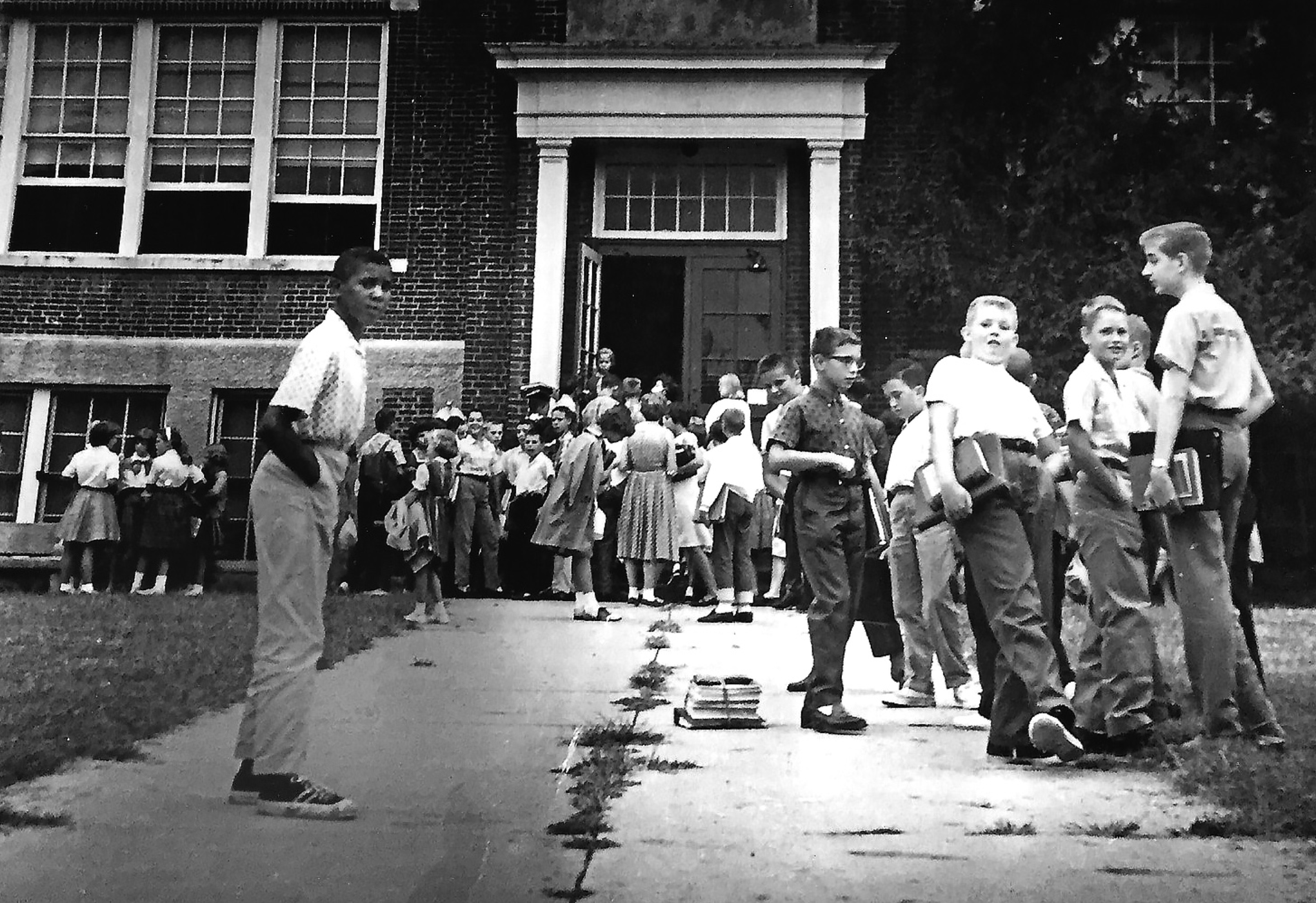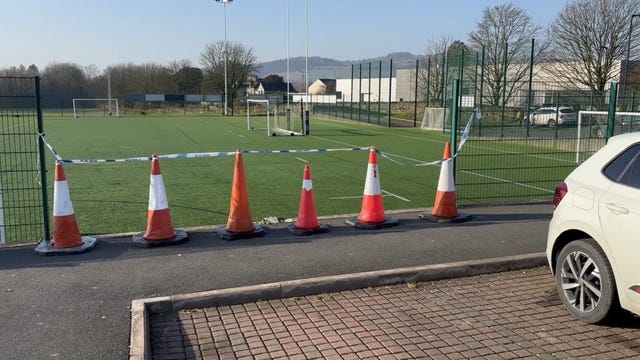End Of School Desegregation Order: Implications For Education

Table of Contents
Resegregation and its Educational Impact
The dismantling of court-ordered school desegregation has led to a measurable increase in racial segregation in schools. This school resegregation isn't just a statistical anomaly; it's a deeply ingrained issue with severe consequences for students and the future of education.
Increased Racial Segregation
Data reveals a disturbing trend: many school districts across the nation are experiencing a significant rise in racial imbalance in schools. The rollback of desegregation efforts has allowed previously integrated schools to become increasingly homogenous, often mirroring the residential segregation patterns of the surrounding communities.
- Examples of increased segregation: Studies in several major cities, including Milwaukee, WI and Charlotte, NC, have shown dramatic increases in school segregation since the end of court orders. These increases are often concentrated in particular neighborhoods, reinforcing existing inequalities.
- Data on racial disparities in school resources: Research consistently demonstrates a strong correlation between the racial composition of a school and the resources it receives. Schools with predominantly minority populations often receive less funding, resulting in fewer qualified teachers, outdated facilities, and limited extracurricular activities.
Impact on Academic Achievement
The correlation between school segregation and disparities in academic performance is undeniable. The achievement gap, a persistent issue in American education, is significantly exacerbated by school resegregation.
- Studies demonstrating achievement gaps: Numerous studies show that students in predominantly minority schools consistently score lower on standardized tests and have lower graduation rates compared to their peers in predominantly white schools. This isn't simply about individual student performance; it's a systemic issue rooted in unequal access to resources and opportunities.
- Discussion of the role of resource disparities: The lack of adequate funding and resources in many predominantly minority schools creates a cycle of disadvantage. Limited access to advanced coursework, technology, and qualified teachers directly impacts student achievement and future prospects. This highlights the interconnectedness of school resegregation and educational inequality.
The Role of Funding and Resource Allocation
The issue of school desegregation is inextricably linked to funding and resource allocation. The way schools are funded and resources are distributed plays a significant role in perpetuating racial inequality in education.
Funding Disparities and School Resources
Funding mechanisms and resource allocation often perpetuate, rather than alleviate, disparities. Many states rely on property taxes to fund schools, creating a system where wealthier districts with higher property values have significantly larger budgets than those in lower-income areas. This directly impacts the quality of education students receive.
- Examples of unequal funding formulas: Significant disparities exist across states and even within districts. Some states utilize funding formulas that exacerbate existing inequalities, while others have implemented reforms aimed at achieving more equitable distribution, though the results often fall short.
- Impact on teacher quality, school facilities, and extracurricular activities: Unequal funding directly translates to differences in teacher quality, school infrastructure, and access to crucial extracurricular activities. This disparity impacts educational outcomes and opportunities for students.
The Impact of Property Taxes and Residential Segregation
The connection between residential segregation, property taxes, and school funding is undeniable. Residential segregation often leads to concentrated poverty in certain neighborhoods, which in turn impacts property values and subsequently, school funding.
- Examples of how property taxes affect school budgets: School districts heavily reliant on property taxes face substantial funding gaps if the property values within their boundaries are low. This creates a vicious cycle where underfunded schools struggle to improve, perpetuating the cycle of poverty and disadvantage.
- The role of zoning and housing policies: Zoning and housing policies have historically played a significant role in creating and maintaining residential segregation, indirectly impacting school funding and perpetuating inequalities.
Legal and Political Ramifications
The legal and political landscape surrounding school desegregation is complex and constantly evolving. Challenges to affirmative action and diversity initiatives, coupled with shifting federal and state legislation, continue to shape the debate.
Challenges to Affirmative Action and Diversity Initiatives
Recent Supreme Court cases have challenged affirmative action policies in higher education and, indirectly, have implications for maintaining diversity in K-12 schools. These legal battles highlight the ongoing tension between the goal of achieving racial diversity and the principle of equal opportunity.
- Supreme Court cases related to affirmative action: Landmark cases have shaped the legal framework around affirmative action, influencing policies at both the higher education and K-12 levels. These decisions have created significant uncertainty about the future of diversity initiatives in schools.
- Examples of legislative challenges to diversity initiatives: At the state level, legislative efforts to restrict or eliminate affirmative action policies have gained traction, further impacting the ability of schools to actively promote diversity.
The Role of Federal and State Legislation
Federal and state laws play a critical role in shaping school desegregation policies. However, the influence of political pressure on educational policy often leads to inconsistent and sometimes contradictory approaches.
- Examples of relevant legislation: Federal legislation, such as the Every Student Succeeds Act (ESSA), aims to address educational inequalities but does not specifically address school segregation directly. State-level legislation varies widely, reflecting different political priorities and approaches to the issue.
- The influence of political pressure on educational policy: Political pressure and partisan divides often influence the implementation and effectiveness of legislation aimed at achieving educational equity. This creates a challenging environment for implementing meaningful change.
Conclusion
The end of court-ordered school desegregation has unleashed a complex set of challenges impacting educational equity and the social fabric of our communities. Resegregation, coupled with persistent funding disparities and legal battles, highlights the urgent need for comprehensive strategies to address the ongoing issue of school segregation. Moving forward, a renewed focus on equitable resource allocation, robust affirmative action policies (where legally permissible), and meaningful legislative action is crucial to ensure that all students have access to a quality education, regardless of race or socioeconomic background. We must continue the conversation and work towards solutions to combat the lasting effects of the end of school desegregation orders and strive for truly integrated and equitable schools for all. Let's actively engage in discussions and actions related to school desegregation to build a more just and equitable future for education. We must continue the fight for school desegregation and work towards a more equitable system for all students.

Featured Posts
-
 Loyle Carners New Singles All I Need And In My Mind
May 02, 2025
Loyle Carners New Singles All I Need And In My Mind
May 02, 2025 -
 Kendal Pitch Tragedy Manchester United Honors Poppy Atkinson 10
May 02, 2025
Kendal Pitch Tragedy Manchester United Honors Poppy Atkinson 10
May 02, 2025 -
 Analyzing The Saudi Abs Markets Post Reform Trajectory
May 02, 2025
Analyzing The Saudi Abs Markets Post Reform Trajectory
May 02, 2025 -
 Spotting Fake Steven Bartlett Videos A Guide To Protecting Your Money
May 02, 2025
Spotting Fake Steven Bartlett Videos A Guide To Protecting Your Money
May 02, 2025 -
 Tributes Pour In Following Death Of Dallas Star 100
May 02, 2025
Tributes Pour In Following Death Of Dallas Star 100
May 02, 2025
Latest Posts
-
 Reform Uks Future Uncertain As Key Figure Considers New Party
May 03, 2025
Reform Uks Future Uncertain As Key Figure Considers New Party
May 03, 2025 -
 Zakharova O Makronakh Kommentariy K Situatsii Vokrug Emmanuelya I Brizhit
May 03, 2025
Zakharova O Makronakh Kommentariy K Situatsii Vokrug Emmanuelya I Brizhit
May 03, 2025 -
 Nigel Farages Reform Party Tory Claims Of A Sham Defection Announcement
May 03, 2025
Nigel Farages Reform Party Tory Claims Of A Sham Defection Announcement
May 03, 2025 -
 Nigel Farages Shrewsbury Visit Flat Cap G And T And Conservative Criticism
May 03, 2025
Nigel Farages Shrewsbury Visit Flat Cap G And T And Conservative Criticism
May 03, 2025 -
 Nigel Farages Reform Uk Faces Rift Ex Deputy Hints At Split
May 03, 2025
Nigel Farages Reform Uk Faces Rift Ex Deputy Hints At Split
May 03, 2025
